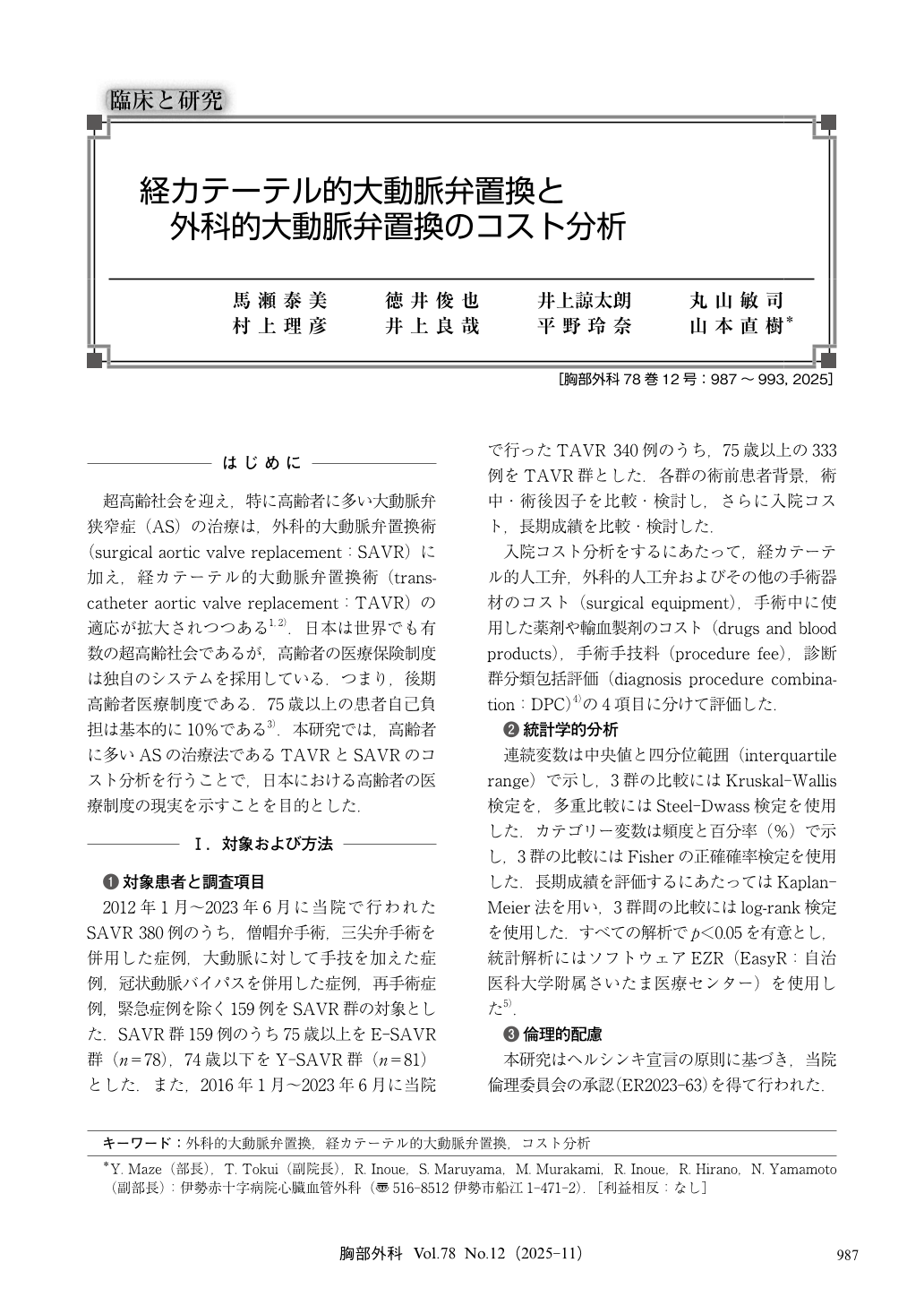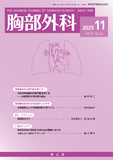Japanese
English
- 有料閲覧
- Abstract 文献概要
- 1ページ目 Look Inside
- 参考文献 Reference
超高齢社会を迎え,特に高齢者に多い大動脈弁狭窄症(AS)の治療は,外科的大動脈弁置換術(surgical aortic valve replacement:SAVR)に加え,経カテーテル的大動脈弁置換術(transcatheter aortic valve replacement:TAVR)の適応が拡大されつつある1,2).日本は世界でも有数の超高齢社会であるが,高齢者の医療保険制度は独自のシステムを採用している.つまり,後期高齢者医療制度である.75歳以上の患者自己負担は基本的に10%である3).本研究では,高齢者に多いASの治療法であるTAVRとSAVRのコスト分析を行うことで,日本における高齢者の医療制度の現実を示すことを目的とした.
Background:Japan adopts a unique healthcare system that is generous to older adults. We evaluated the cost treatment of transcatheter aortic valve replacement (TAVR) and surgical aortic valve replacement (SAVR) in older adults in Japan.
Objective and methods:The TAVR group (n=333) included patients who underwent the procedure at the age of ≧75 years. The E-SAVR (n=78) and Y-SAVR (n=81) groups included patients who underwent a simple SAVR at the age of ≧75 and ≦74 years, respectively. We compared the clinical outcomes and total inpatient costs among the three groups.
Results:The operative time, length of intensive care unit and hospital stay were significantly shorter in the TAVR group. Drug and blood product cost, procedure fee, and diagnosis procedure combination cost were significantly lower in the TAVR group. The surgical equipment cost and total costs were significantly higher in the TAVR group. The rate of patients’ payment was significantly lower in the TAVR group;however, it remained minimal in all three groups. The 5-year survival rate was significantly lower in the TAVR group than in the SAVR group.
Conclusions:The total inpatient costs were higher in patients who underwent TAVR than in those who underwent SAVR. The self-payment for medical care costs for older adults is relatively small in Japan.

© Nankodo Co., Ltd., 2025


